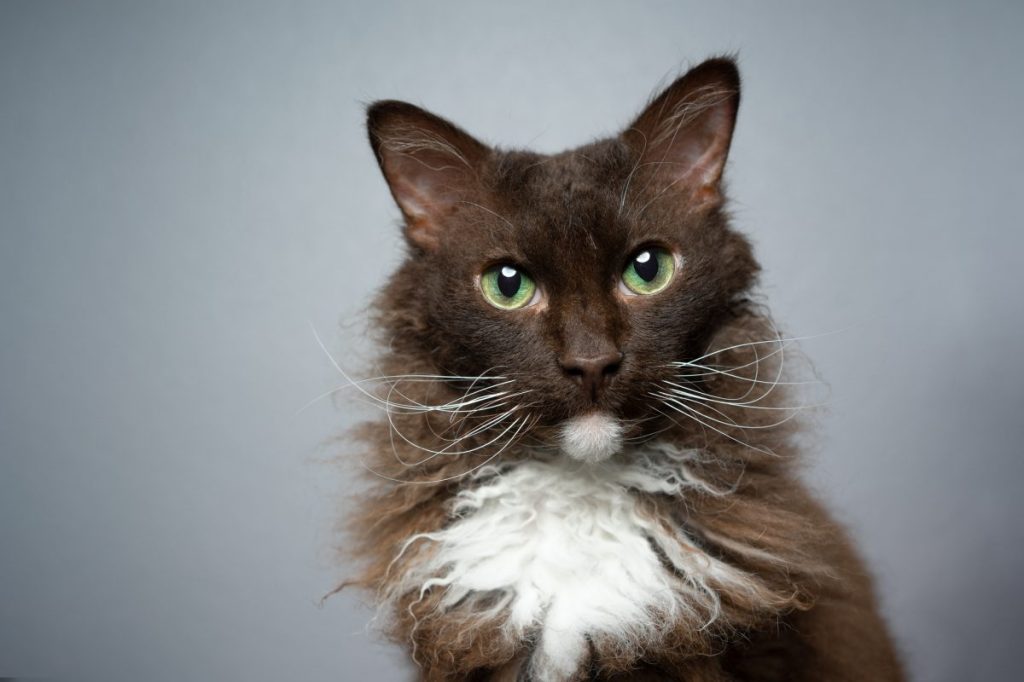The LaPerm is a distinctive and enchanting cat breed known for its unique curly coat, characterized by loose, bouncy ringlets that set it apart from other feline varieties. The LaPerm’s striking appearance is matched by its affectionate and people-oriented nature. These cats come in various colors and patterns, and their coats can be short or long. Despite their elegant curls, LaPerms are not high-maintenance in terms of grooming, as their fur is soft and pliable. Renowned for their friendly and sociable disposition, LaPerms enjoy interacting with their human companions, forming strong bonds within the family. Their charming looks and amiable personalities make them cherished members of households seeking a unique and loving feline companion.
The LaPerm is a testament to the diversity of the cat world. With its distinctive curly coat and endearing personality, LaPerms have carved out a special place in the hearts of cat enthusiasts worldwide. This breed’s origins can be traced back to the early 1980s when a naturally occurring genetic mutation gave rise to the first LaPerm cat in Oregon, USA. This fortuitous mutation led to the development of the breed, which is celebrated for its unique and eye-catching curly coat.
When considering a LaPerm, it’s advisable to prioritize adopting from rescue organizations or shelters to provide a loving home to a cat in need. However, if you decide to purchase, it’s crucial to choose a reputable breeder. Conduct thorough research to ensure that the breeder follows ethical practices and prioritizes the well-being of their cats. Reputable LaPerm breeders prioritize the health and temperament of their cats, conduct necessary health screenings, and provide a nurturing environment for the kitties. This active approach ensures that you bring home a healthy and happy kitty while discouraging unethical breeding practices.
Quick Facts
- Origin: Oregon, United States
- Size: Medium
- Breed group: Natural
- Lifespan: 12-15 years
- Coat: Wavy or curly coat, can be short or long, and comes in a variety of colors and patterns
- Temperament: Affectionate, playful, and intelligent
- Exercise needs: Moderate
- Training: Trainable
- Grooming: Low-maintenance
- Health: Generally healthy
- Some LaPerm kittens are born bald, and grow their in the following weeks afterward.
- As a way to honor the sacred Chinook land near the birthplace of the first LaPerm cat, LaPerm breeders might give their kittens Native American names.
- LaPerm cats are the only rex breed with a dominant curly gene, rather than recessive.
LaPerm Pictures
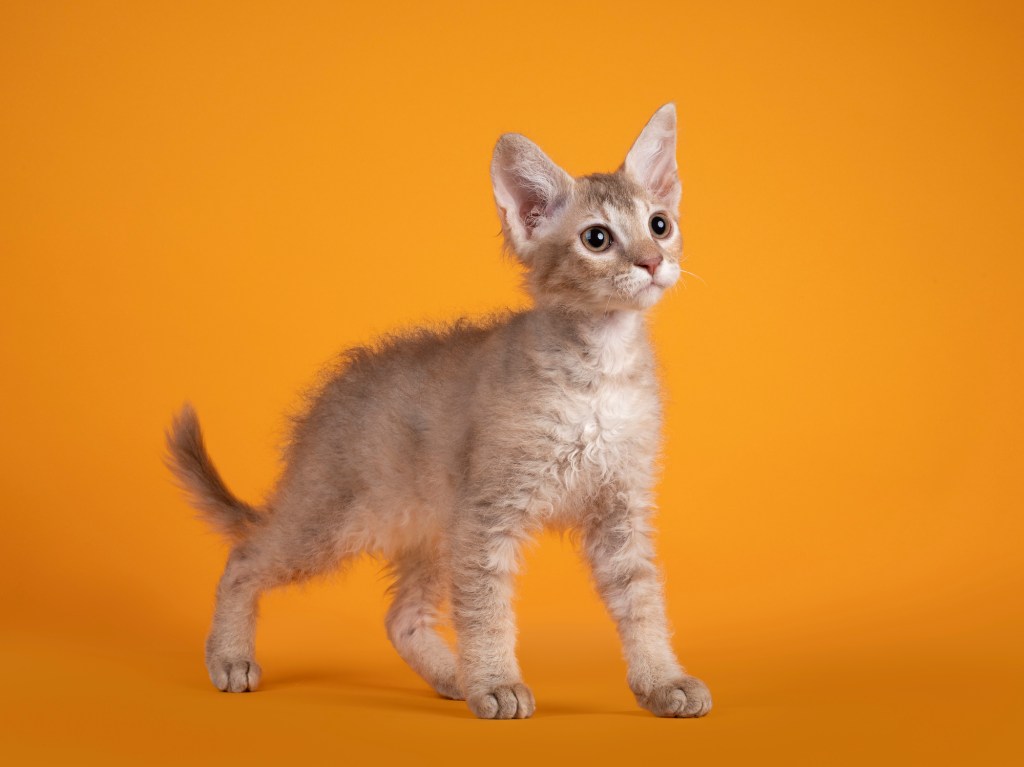
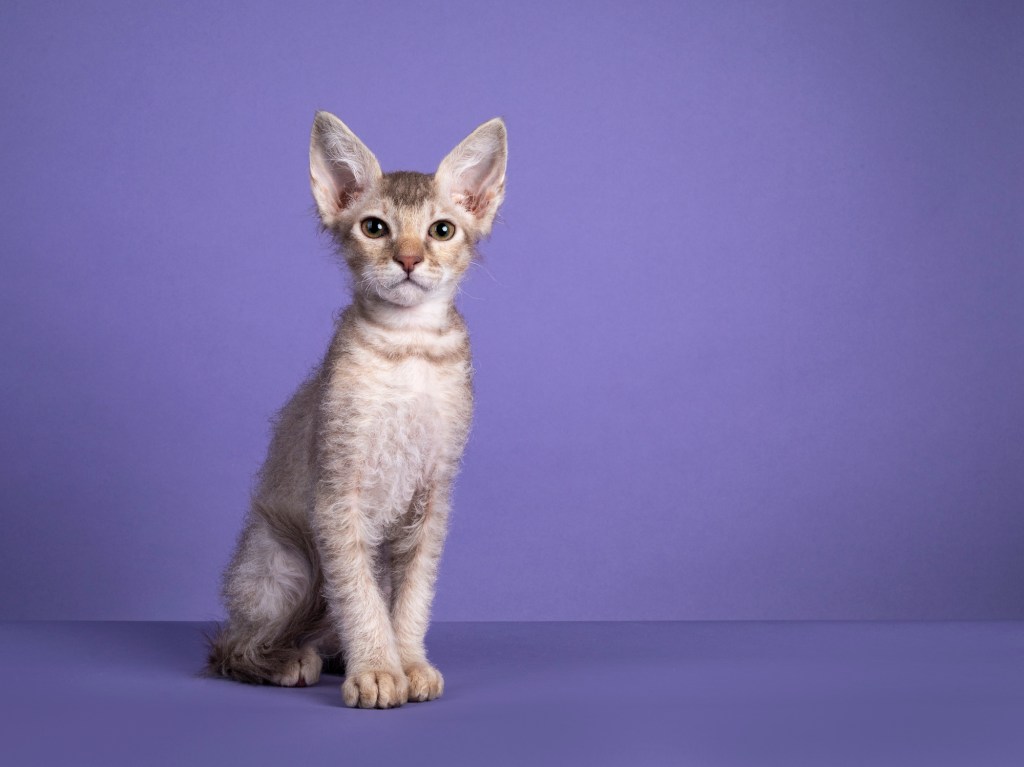
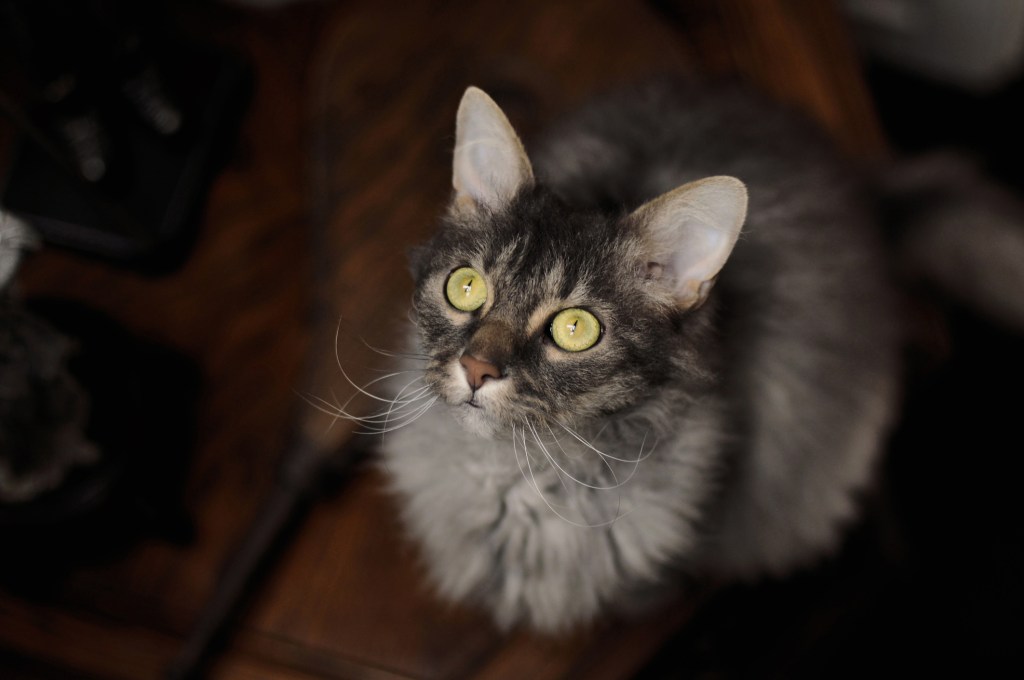
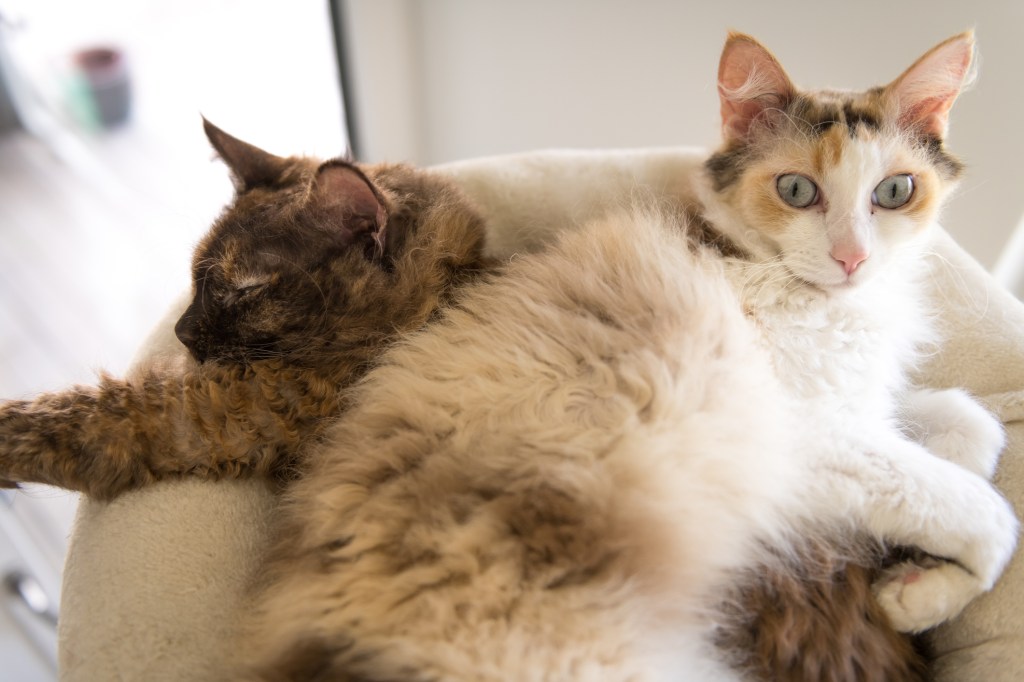
-
Affectionate with Family
Some cat breeds are typically independent and aloof, even if they’ve been raised by the same person since kittenhood; others bond closely to one person and are indifferent to everyone else; and some shower the whole family with affection. Breed isn’t the only factor that goes into affection levels; cats who were raised inside a home with people around feel more comfortable with humans and bond more easily.

See Cats Less Affectionate with Family -
Amount of Shedding
If you’re going to share your home with a cat, you’ll need to deal with some level of cat hair on your clothes and in your house. However, shedding does vary among the breeds. If you’re a neatnik, you’ll need to either pick a low-shedding breed or relax your standards. This furniture cover can make it easier to clean up cat hair and keep it off your sofa!
-
General Health
Due to poor breeding practices, some breeds are prone to certain genetic health problems. This doesn’t mean that every cat of that breed will develop those diseases; it just means that they’re at an increased risk. If you’re looking only for purebred cats or kittens, it’s a good idea to find out which genetic illnesses are common to the breed you’re interested in.
-
Potential for Playfulness
Some cats are perpetual kittens—full of energy and mischief—while others are more serious and sedate. Although a playful kitten sounds endearing, consider how many games of chase the mouse-toy you want to play each day, and whether you have kids or other animals who can stand in as playmates. A classic wand cat toy like this one is perfect for playful felines!
-
Tendency to Vocalize
Some breeds sound off more often than others with meows, yowls, and chattering. When choosing a breed, think about how the cat vocalizes and how often. If constant “conversation” drives you crazy, consider a kitty less likely to chat.
-
Kid-Friendly
Being tolerant of children, sturdy enough to handle the heavy-handed pets and hugs they can dish out, and having a nonchalant attitude toward running, screaming youngsters are all traits that make a kid-friendly cat. Our ratings are generalizations, and they’re not a guarantee of how any breed or individual cat will behave; cats from any breed can be good with children based on their past experiences and personality.
-
Friendly Toward Strangers
Stranger-friendly cats will greet guests with a curious glance or a playful approach; others are shy or indifferent, perhaps even hiding under furniture or skedaddling to another room. However, no matter what the breed, a cat who was exposed to lots of different types, ages, sizes, and shapes of people as a kitten will respond better to strangers as an adult.
-
Easy to Groom
Some breeds require very little in the way of grooming; others require regular brushing to stay clean and healthy. Consider whether you have the time and patience for a cat who needs daily brushing. You should definitely pick up this awesome de-shedding tool for cats of any hair length!
-
Intelligence
Some cat breeds are reputed to be smarter than others. But all cats, if deprived the mental stimulation they need, will make their own busy work. Interactive cat toys are a good way to give a cat a brain workout and keep them out of mischief. This scratcher cat toy can keep your smart kitty busy even when you’re not home!
-
Pet Friendly
Friendliness toward other household animals and friendliness toward humans are two completely different things. Some cats are more likely than others to be accepting of other pets in the home.
LaPerm History
When a brown tabby barn cat named Speedy produced a litter of kittens in The Dalles, Oregon, in 1982, one of them was bald, with tabby markings on her skin, and big ears that were spaced wide apart. She looked like a little alien from outer space. When her coat began to develop, she looked even more different: it was curly. And that was the name she was given by owner Linda Koehl.
Curly eventually produced her own kittens by various males in the area, including a Siamese and a Manx. All of her kittens shared their mother’s curly coat, the result of a dominant mutation. Geneticists determined that the cats were distinct from the other rex, or curly-coated, breeds such as the Selkirk Rex, which first appeared in Montana in 1987, or the Devon and Cornish Rexes, which originated in Great Britain.
Eventually, status as a breed was sought for the curly-coated cats. They were given the name LaPerm and achieved recognition from The International Cat Association in 2002. The Cat Fanciers Association also recognizes the breed. To maintain their genetic diversity, LaPerms are outcrossed to non-pedigreed domestic shorthairs and longhairs.
LaPerm Size
The LaPerm is a small cat, weighing five to eight pounds. He reaches maturity when he is two to three years old.
LaPerm Personality
The clever LaPerm has a sense of humor. Often described as clownish, he is something of a mischief-maker who makes talented use of his paws to open doors, swipe things he wants or tap you on the shoulder for attention. He’s not clingy, but he likes to be with you and will follow you around, sit on your shoulder or the top of your computer, or sit in your lap, whichever option is most convenient for him.
He is moderately active and enjoys retrieving items that are thrown for him. Despite his reputation for getting into things, the LaPerm is pleasant to live with. He rarely uses his voice, and he is affectionate, gentle and patient with his people. Most are also welcoming to visitors as long as they were well socialized as kittens.
LaPerm Health
Both pedigreed cats and mixed-breed cats have varying incidences of health problems that may be genetic in nature. La Perms are generally healthy, however. They are not known for developing any particular illnesses.
LaPerm Care
The LaPerm’s unusual coat is easy to care for and usually doesn’t mat or tangle if it is combed or brushed one to three times a week. Longer coats should be groomed more frequently. Use a comb with revolving teeth for best results. It will go through the coat easily without straightening the curls.
To keep the cat looking his curly best, mist the coat with a little water or fluff it with damp hands to set the curls. The coat sheds little, and shedding is further reduced with regular brushing. If small mats develop, brush them out gently with a slicker brush or greyhound comb (stainless steel with narrow teeth at one end and wider teeth at the other end).
If you give the LaPerm a bath, press a towel against the coat to soak up moisture and then let him air dry in a warm, draft-free spot. Using a blow dryer will give him a bad case of the frizzies.
Brush the teeth to prevent periodontal disease. Daily dental hygiene is best, but weekly brushing is better than nothing. Trim the nails weekly. Wipe the corners of the eyes with a soft, damp cloth to remove any discharge. Use a separate area of the cloth for each eye so you don’t run the risk of spreading any infection.
Check the ears weekly. If they look dirty, wipe them out with a cotton ball or soft damp cloth moistened with a 50-50 mixture of cider vinegar and warm water. Avoid using cotton swabs, which can damage the interior of the ear. Keep the litter box spotlessly clean. Cats are very particular about bathroom hygiene.
It’s a good idea to keep a LaPerm as an indoor-only cat to protect him from diseases spread by other cats, attacks by dogs or coyotes, and the other dangers that face cats who go outdoors, such as being hit by a car. LaPerms who go outdoors also run the risk of being stolen by someone who would like to have such an unusual cat without paying for it.
LaPerm Coat Color And Grooming
The LaPerm’s outstanding feature, of course, is his coat, which has loose, bouncy curls, making it light and airy to the touch. Tighter, longer curls surround the neck, forming a ruff and clustering at the base of the ears. The whiskers are also long and curly. The coat comes in two lengths—short and long—and any color or pattern. Tabbies, tortoiseshells and red cats are most common. Longhaired LaPerms have a plumed tail.
The coat’s length and fullness may vary seasonally. It sometimes parts naturally down the middle of the back. The shorthaired LaPerm does not necessarily have a ruff, ringlets or “earmuffs,” and the texture of the coat may be harder than that of the longhaired LaPerm. He has a tail with fur that looks wavy, more like a bottlebrush than a plume. The short coat may also part down the middle of the back.
Whatever the length, the LaPerm coat manifests in different ways. Kittens may be born hairless, with straight hair or with curly hair. Both longhaired and shorthaired kittens can be born in the same litter. You may notice that the name on your kitten’s pedigree includes the letters BC, BS or BB. Those initials indicate whether the kitten was born curly, born straight or born bald and helps breeders study how the gene is expressed.
The LaPerm’s head is a modified wedge shape, meaning it is slightly rounded. The medium-size to large ears are slightly flared. Longhaired LaPerms have full furnishings (hair inside the ears) and a covering of fur on and around the outer ears that resembles earmuffs. Expressive eyes can be any color.
Children And Other Pets
The easygoing but playful LaPerm is well suited to life with families with children and cat-friendly dogs. He can learn tricks, enjoys interactive toys, and loves the attention he receives from children who treat him politely and with respect. Supervise young children and show them how to pet the cat nicely. Instead of holding or carrying the cat, have them sit on the floor and pet him. Always introduce any pets, even other cats, slowly and in a controlled setting.
LaPerm Rescue Groups
More Info For You
If you’re also looking for a dog, check out DogTime’s dog breed page!
